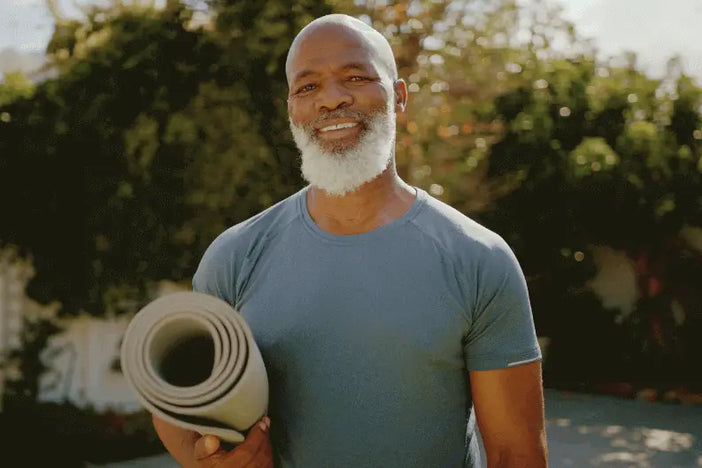Men’s Health Month: What can we do this June?

June is Men’s health month and we are considering our five greatest challenges in the area of men’s health and gathered some fun ideas for you and all the important men in your life to do during the month. The month is used to raise awareness about health care for men and encourages men to make healthy lifestyle choices for themselves and their families. According to the Centers for Disease Control and Prevention, men in the United States, on average, die 5 years earlier than women and die at higher rates from the three leading causes of death, heart disease, cancer and unintentional injuries.
During Men’s Health Month, we encourage men to take control of their health, and for families to teach young boys healthy habits throughout childhood. Men often experience health difficulties that can go unnoticed or neglected, making Men’s Health Month so important. For example, a survey conducted by The Cleveland Clinic confirmed this trend, finding that 40 percent of men go to the doctor only when they have a serious health issue, and never go for routine checkups. This number is far lower than women’s frequency of doctor visits. Men are shown to also be afraid of diagnosis and will avoid the doctor if there is a problem for fear of the results. Having a health concern or problem is not a sign of weakness. This month is intended to foster awareness and encourage conversations about men’s health issues.
What are the five greatest concerns regarding men’s health?
- Diabetes - Research shows that 1 in 10 men have diabetes with men 40% more likely to die prematurely of the disease than women. BBC News reported that, “Men need to gain far less weight than women to develop the condition, study findings suggest. The Glasgow University team found men developed the disease at a lower Body Mass Index (BMI) than women. They believe distribution of body fat is important - men tend to store it in their liver and around the waist. Women, meanwhile, have greater amounts of 'safe' subcutaneous fat stored on the thighs and hips, for example. This means women need to accumulate more fat overall than men to develop the harmful fat deposits linked with diabetes, the researchers explain in the journal Diabetologia.”
- Mental Health - Suicide is the single biggest killer of men under 45. Yet, it’s not just young men that are at risk, as the highest suicide rate is for men aged 45-49 in the UK. There are many factors that make men more vulnerable to suicide. For example the stigma that men shouldn’t talk about mental health.
- Prostate Cancer - The American Cancer Society reports, “About 1 man in 8 will be diagnosed with prostate cancer during his lifetime. Prostate cancer is more likely to develop in older men and in non-Hispanic Black men. About 6 cases in 10 are diagnosed in men who are 65 or older, and it is rare in men under 40. The average age of men at diagnosis is about 66.”
- Heart Disease - Heart disease is the leading cause of death for men in the United States, killing 357,761 men in 2019—that’s about 1 in every 4 male deaths. The CDC notes that diabetes, being overweight, having an unhealthy diet, sedentary lifestyle or excessive alcohol use all contribute to the likelihood of heart disease.
- Addiction - Men are nearly three times more likely than women to become alcohol dependent (8.7% of men are alcohol dependent compared to 3.3% of women - Health and Social Care Information Centre). Additionally, men are more likely to use (and die from) illegal drugs.
What can you do this month to have fun and draw awareness to these challenges?
- Wear Blue - The color for Men’s Health Month is blue, wearing blue this month shows solidarity in supporting your friends, family and coworkers this month. Wearing blue and encouraging others to wear blue in honor of MHM can help popularize, draw attention to the month and allow for more conversations that destigmatize health issues of men of all ages.
- Refocus on living a healthy lifestyle - Eating healthy, drinking enough water, regular sleep and regular exercise reduce the likelihood of complications with type 2, and heart disease. Practicing consistent healthy choices lead to an overall higher life expectancy and quality of life. Taking care of yourself and making health focused choices lead you to having more satisfaction and less anxiety every day. Encourage your sons, brothers, and partners to also commit to living a healthy lifestyle by making these daily choices.
- Visit the doctor - As we said before, men are not consistently going to routine checkups. Routine checkups at your doctor gives you invaluable information about your health and what you should be prioritizing/ limiting from your daily life. For example, you can gain important information by routinely getting your blood work checked. Regular check-ups can help find potential health issues before they become a problem.
- Talk about your mental health - If you’re concerned you’re developing a mental health problem, talk to your doctor. It can be daunting, but most people find that speaking to their general practitioner and getting help and support can make a big difference to their lives. Destigmatize men being mindful and open to discussing their health and wellness!
- Plan some fitness gatherings with friends, coworkers and family - Create a fitness gathering by organizing a golf day, flag football, bowling, frisbee biking, etc. Pick your favorite thing and get everyone involved. Getting outside, or active inside and together is good for you and everyone involved.
- Donate to a men’s health organization or fundraiser - Check out the MHM website for more information on where to donate or how to organize your own fundraiser or health fair this June.
Find out how else you can improve your health by joining our Winning Type 2 Diabetes Together group. Share your stories, ask the important questions, and get the advice you need to maintain a healthy lifestyle.



